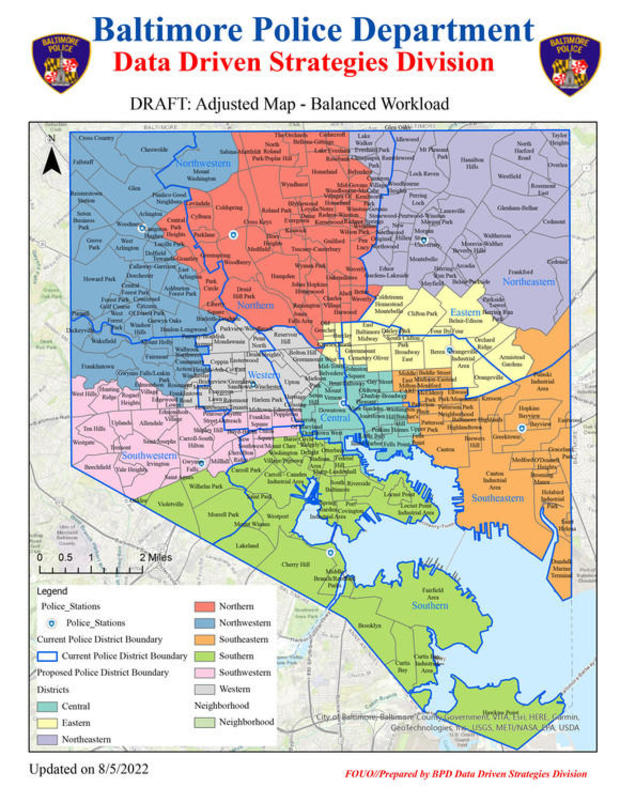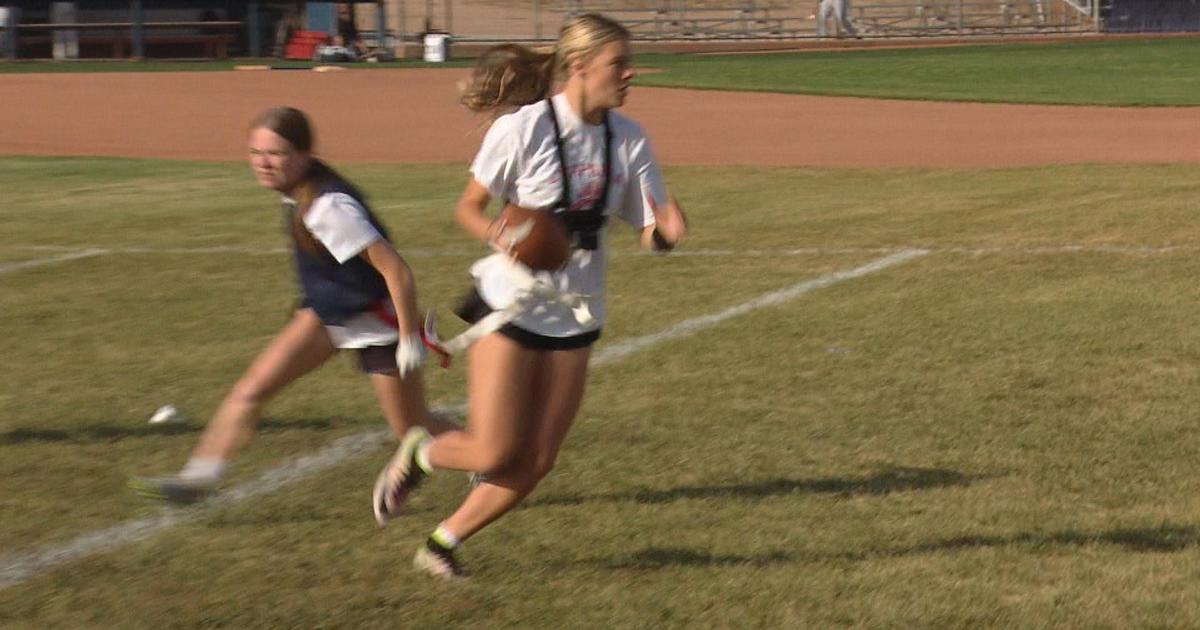Scott, Baltimore police submit newly revised redistricting map to City Council
BALTIMORE -- The Baltimore Police Department has submitted a new map to City Council with the first boundary changes to the department's nine districts in decades, Mayor Brandon Scott announced Wednesday.
The map aims to deploy officers in a more efficient way that reflects years of demographic changes and crime trends. Back in May, when the city started the process of redistricting, Scott said the boundaries have not undergone significant changes since 1959.
Officials said the changes would also help officers respond to crime faster, allow districts to increase deployments and save the department money.
"I am excited to announce that with these new maps, we are finally able to correct a wrong many decades in the making and adjust our police districts to meet current population, workload, and crime trends," Scott said in a statement. "After several briefings concerning community input, I am proud that we were able to take our residents' voices into consideration before settling on the finalized boundaries"
The Mayor's Office said the department received more than 1,000 responses from the community during the two-phase process. More than 650 residents responded during the second phase, particularly about moving certain neighborhoods to new districts.
The proposal would reunite 18 neighborhoods previously divided by district lines, officials said. Under the proposal, some of the biggest changes would come to the Central, Eastern and Southeastern districts.
The Eastern would lose several neighborhoods to the Central (Johnston Square, Oldtown and Penn-Fallsway) and Southeastern (Middle East, Madison-Eastend and Biddle Street), while expanding into neighborhoods that were previously part of the Northeastern, such as Clifton Park, Coldstream Homestead Montebello and Berea.
Other noteworthy changes: the Western would take Bolton Hill, Upton and Reservoir Hill from the Central; the Central would take Fells Point, Little Italy, Jonestown, Perkins Homes and a couple other neighborhoods from the Southeastern; the Southwestern would lose 10 areas in the northern part of its current coverage area and take several neighborhoods from the Southern and Western, reaching the edge of downtown.
In the first draft, the Northern lost Waverly, Better Waverly, Govans, Belvedere and several other neighborhoods to the Northeastern and Eastern, but the latest map returns most of those areas to the district.
In 2019, state Sen. Cory McCray sponsored legislation, SB 39, requiring the city and police commissioner to adjust the boundaries of police districts after each decennial census. The bill passed, tying boundary changes to the most recent count in October 2020.
According to the most recent census data, Baltimore's population has dropped to 585,708 residents, compared with 939,024 people in 1960. Some neighborhoods have grown in that time, while others are now home to some of the city's estimated 15,000 vacant homes.
The redistricting effort is one of the latest steps the department has taken in an effort to modernize. Earlier this year city officials announced the Baltimore Police Department would begin hiring civilian investigators and filling other positions with hires who don't have police powers in an effort to free up more sworn personnel.
In July the department began its SMART policing initiative in an effort to reduce the amount of time officers spend dealing with non-emergency calls.





